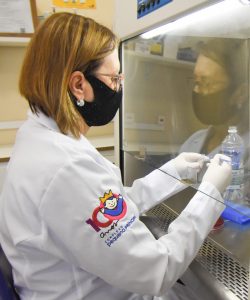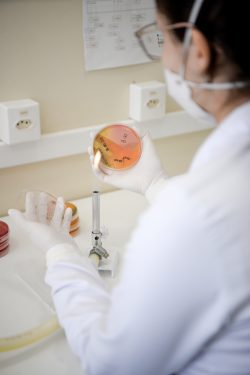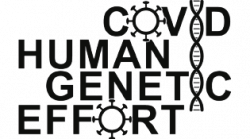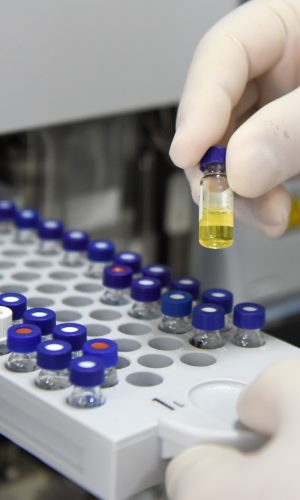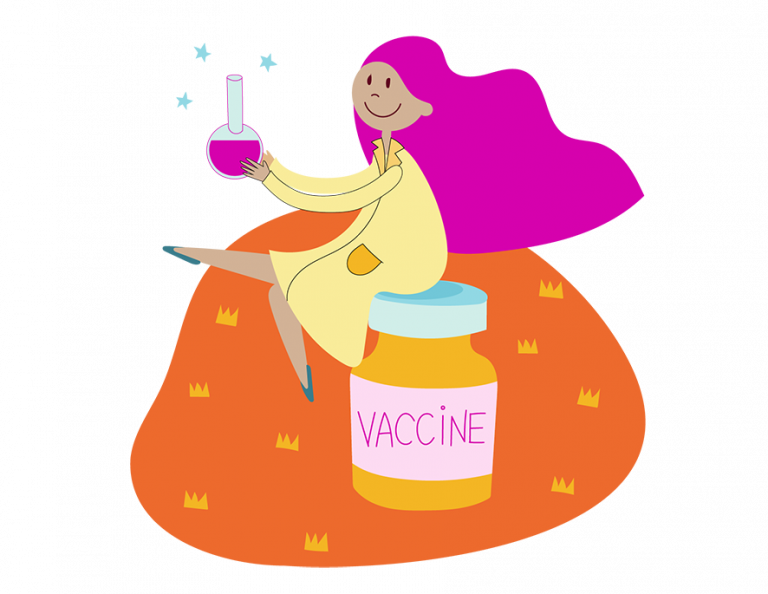


“Vaccines [against COVID-19] were developed in record time – a victory of science and human ingenuity.”
secretary-general of the UN
Producing the future
The COVID-19 pandemic has shed light to the strategic importance of scientific research to preserve life. Through coronavirus vaccines, it also showed in practice how new treatments need to be based on science: the present work of scientists is what shapes the future of healthcare.
The appreciation of the close link between the laboratory and clinical and surgical practice led to the creation of the Pelé Pequeno Príncipe Research Institute. Inaugurated in 2006, it was born from a comprehensive conception of children’s health: it complemented care (offered by the Hospital since 1919) and education (offered by the College since 2003), thus reinforcing the Complex’s commitment to the cause of childhood and adolescence. The plan was to create a research institute, but permeated with a social concern – as all scientists should be, according to the wise words of one of the great personalities in the area, a key figure for the creation of the Pequeno Príncipe Innovation Office: the physical chemist Sérgio Mascarenhas, who died in 2021.
Fifteen years after its creation, the Institute recorded, even with the adjustments required by the pandemic times, an exceptional volume of scientific production. In 2021, researchers doubled the number of publications compared to the average of the previous four years. Several works started in 2020 – to improve the diagnosis, characterization and treatment of COVID-19 – were intensified. Among them, the creation of a serum with antibodies against the disease. The relevance of many studies was recognized in A1-level journals, the highest of Qualis Capes (Brazilian official system for classifying scientific production), such as Science Immunology, Nature Immunology, Cancer Research, among others.
Such achievements were the outcome of some strategy changes:
- With clinical work still affected by social distancing, which makes tracking participants difficult, the Institute emphasized projects that could be conducted remotely.
- The researchers dedicated themselves to the analysis of data already obtained, searched for information in international public databases and produced works of systematic narrative reviews, meta-analyses (statistical analyzes based on the results of multiple scientific studies) and more complex works, such as Big Data in silico (genomic, proteomic and transcriptomic analyses).
- Cooperation with national and foreign institutions was strengthened. Thus, the Institute benefited from findings obtained by research partners in Brazil and abroad, in projects related to COVID-19 and pediatric cancer.
The present work of scientists is shaping the future of healthcare.

Maturity reached at the age of 15
In normal times the event would be held in an auditorium, with seminars followed by laboratory visits. But the 15 years of inauguration of the Pelé Pequeno Príncipe Research Institute were completed in the midst of one of the worst months of COVID-19, in April 2021. The celebration, then, had to be online: a live section with about 100 participants recalled the main projects in progress, highlighted the importance of the research developed and highlighted the academic training offered.
Even with all participants isolated, each one on their computer screen, the professionals were moved as they recalled the most relevant conquests and the companions that helped to build the beginning of this journey in favor of childhood and adolescence.
In its first 15 years, the Research Institute has trained almost 130 masters and doctors, published more than 350 scientific articles and produced knowledge that has already benefited thousands of children: an exam added to the main bloodspot test (TP53 p.R337H) to discover the second hereditary genetic mutation (XAF1 p.E134*) associated with a predisposition to the development of a type of childhood cancer that has the highest incidence worldwide in Paraná (adrenocortical carcinoma), the fifth largest worldwide study for the detection of primary immunodeficiencies (errors of innate immunity), studies to improve detection of attention-deficit/hyperactivity disorder (ADHD) – and so many other advances.
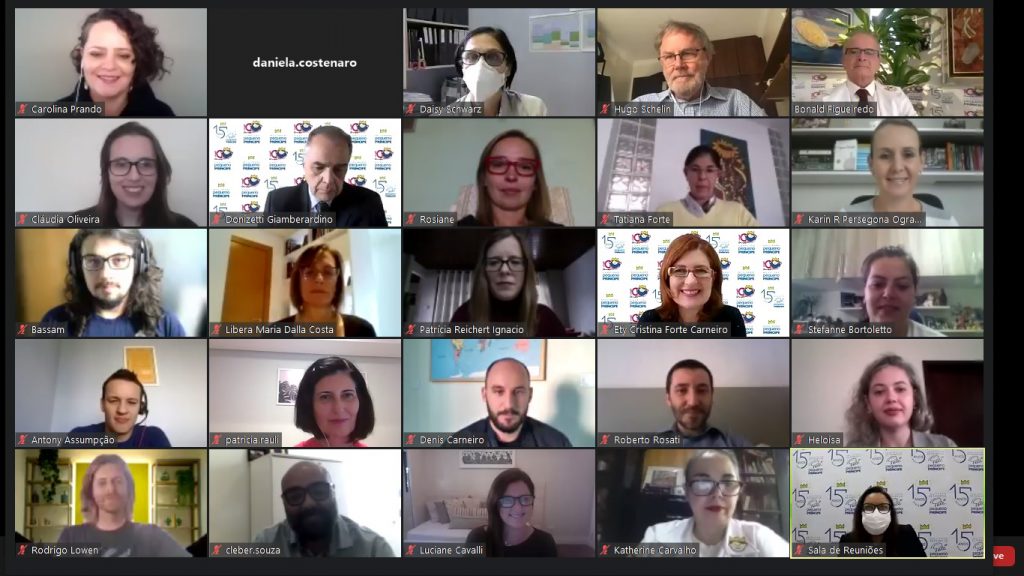
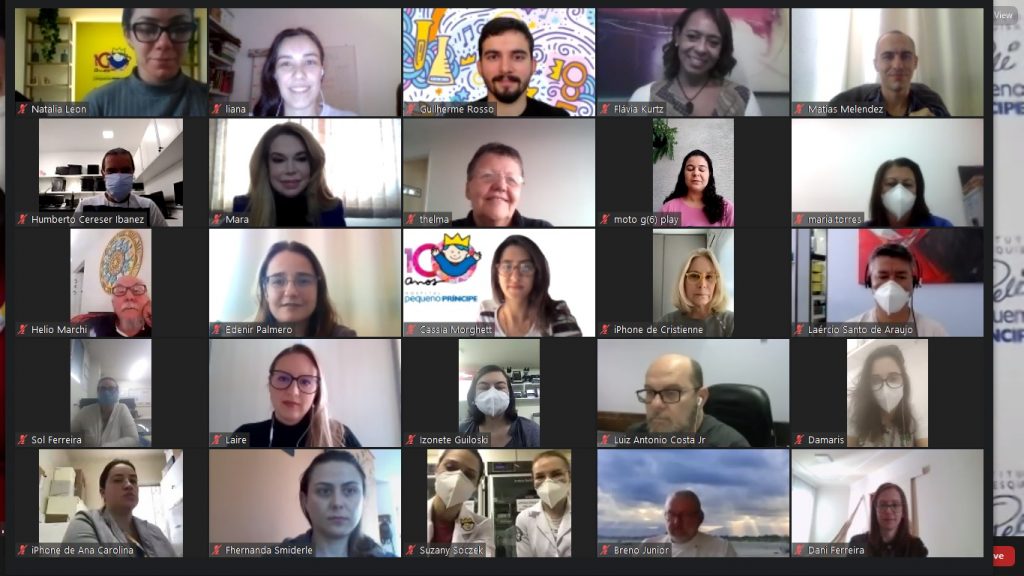
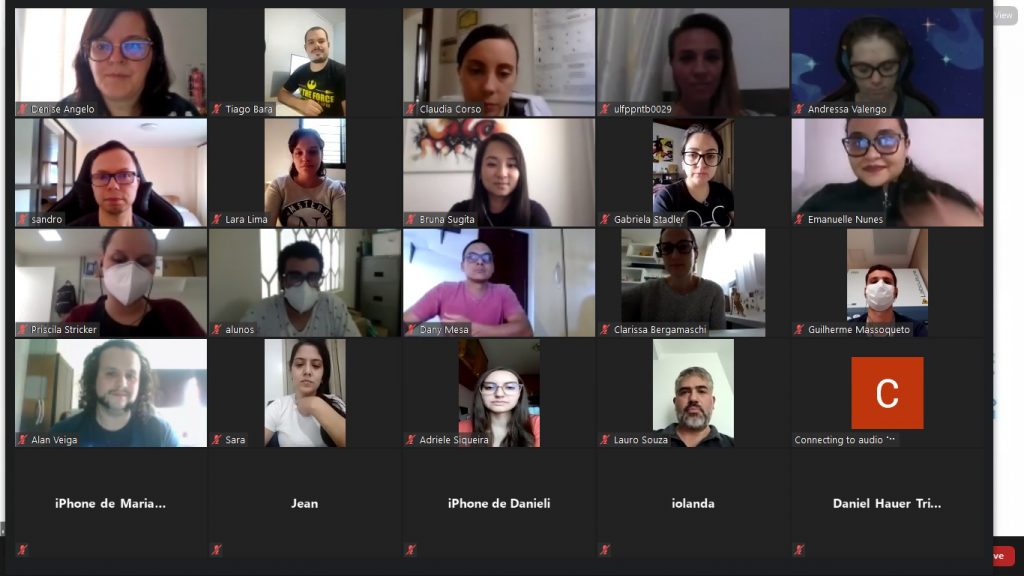
The featured research
COVID-19 under review
The knowledge accumulated about COVID-19 in the first year of the pandemic was fundamental to improve the treatment of patients infected with the coronavirus and to fight the spread of this virus. However, many aspects of SARS-CoV-2 need to continue to be studied. The Pelé Pequeno Príncipe Research Institute joins the efforts of the world scientific community to:
- Understand in details the behavior of different variants of SARS-CoV-2, including in people with other diseases.
- Investigate consequences of therapies in use.
- Develop ways to avoid serious cases after contagion.
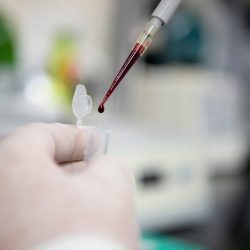
What do these studies look for?
A study looks at how genetic inheritance and immunological factors are associated with the infection, which can help define protocols and new therapies. The project is part of COVID Human Genetic Effort, an initiative with the participation of scientists from around the world. In Brazil, it is coordinated by a researcher from the Institute.
Another group aims at the macrophage activation syndrome, a rare genetic disease that affects the immune system and causes excessive proliferation of defense cells, called macrophages. In partnership with the Pontifical Catholic University of Paraná (PUCPR), scientists analyzed lung tissue from people who died as a result of COVID-19 and concluded that the genetic alteration may be a risk factor for those infected with the coronavirus.
Metabolic syndrome – a collection of risk factors involving cardiovascular problems, obesity and insulin resistance – increases the risk of heart disease, stroke and diabetes. It also increases the chances of death in those infected with SARS-CoV-2. A project by the Research Institute aims to elucidate the mechanisms of the syndrome to identify new opportunities for the treatment of this condition.
Small types of RNA (molecules that synthesize proteins), miRNAs play a significant role in regulating the response to the virus. They alert the immune system but can also lead to an overreaction that causes inflammation and favors SARS-CoV-2. The systematic review of studies on the topic, conducted together with researchers from PUCPR, showed that the analysis of miRNAs helps to define risk groups and that the molecule can be the target of future treatments against COVID-19.
Even before the diagnosis of COVID-19 is confirmed, small patients with symptoms that demand more attention are frequently submitted to a CT scan of the chest. The exam helps to better analyze the health picture but exposes children to extremely high doses of radiation – which, in some cases, can cause cancer. The Institute began measuring the values of these doses to compare them to established levels nationally and internationally, in addition to finding out whether CT scans performed without sedation increase radiation exposure.
Errors of Innate Immunity are a group of over 400 rare genetic disorders that affect the functioning of the immune system and can lead to serious infections. The study with 121 participants, developed in partnership with universities in Brazil and abroad, concluded that illnesses were not a determining factor for greater severity of COVID-19, except in patients who had comorbidities.
At the beginning of the pandemic, the pediatric age group was less affected by the coronavirus. This perception has changed over time, so it is relevant to collect and process all available information about the clinical manifestations and evolution of the disease in children and adolescents.
In addition to the symptoms that accompany acute infection, it is now known that the coronavirus also has long-term effects. The project evaluates the cases of health professionals infected by SARS-CoV-2 and surveys sequelae one year after infection.
A meta-analysis conducted in partnership with other Brazilian institutions reviewed and compared the results of 12 studies on biomarkers – biological signals that indicate changes in the body – associated with the immune system and related to inflammatory conditions. The study showed that low lymphocyte counts are linked to severe cases of COVID-19, which means that it is possible to identify patients with the possibility of a critical evolution through a blood count.
The project, conducted in partnership with the Federal University of Technology of Paraná (UTFPR, abbreviation in Portuguese), inaugurates bioprinting at the Institute. It will reproduce an in vitro alveolus (functional unit of the lungs) to be used in lung-acting drug tests, including against COVID-19. Bioprinting uses biogel as a raw material, a substance formed by protein and water mixed with nutrients. The compound allows the growth of cells, giving rise to human tissues. In the future, scientists hope to be able to print entire organs.
A randomized clinical trial has begun to compare the performance of two existing drugs on the market, clarithromycin and ivermectin, to see if they are able to reduce the burden of SARS-CoV-2 in critically ill patients. Currently, drugs are recommended primarily as antimicrobials and antiparasitic.
The Institute’s researchers joined forces with the world scientific community to advance knowledge about the coronavirus.
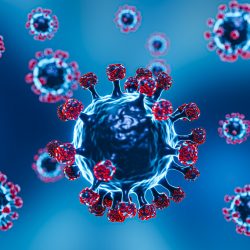
Antibodies to neutralize the coronavirus
One of the projects of the Research Institute in the area of COVID-19 is the development of antibodies against the coronavirus from the plasma of horses. Started in 2020, the study concluded its preliminary phases in 2021.
After the production of a serum by the Pelé Pequeno Príncipe Research Institute and the Center for Immunobiological Production and Research (CPPI, which is part of the State Foundation for Healthcare, Funeas, an agency of the Paraná State Department of Health), the raw horse serum is sent for antibody extraction at Ezequiel Dias Foundation (Funed), in Minas Gerais, to later confirm its efficiency in blocking SARS-CoV-2 in mice genetically modified to contract COVID-19. The analysis of the efficiency and safety of the serum will be conducted in laboratories of the Center for Immunobiological Production and Research and the Oswaldo Cruz Foundation (Fiocruz) in Paraná.
The treatment was conceived by researchers from Pequeno Príncipe based on the concept of passive immunity, in which the patient receives ready-made antibodies instead of producing them in the body. It is indicated for people without immunity against the coronavirus – both unvaccinated and immunized who have been unable to produce antibodies.
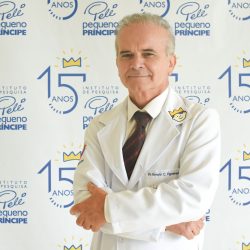
Genetic and immunological causes of severe forms of COVID-19
Two findings published in 2021 in the journal Science grew out of research by the COVID Human Genetic Effort consortium, an international project that covers hundreds of hospitals around the world and which, in Brazil, has a group led by the Research Institute. The articles showed that more than 10% of young, healthy people who develop severe forms of COVID-19 produce antibodies that attack not the virus, but the immune system itself (autoantibody). Another 3.5%, at least, carry a specific type of genetic mutation that affects the immune response.
In both cases, patients do not have adequate type I interferon, a group of 17 proteins essential to protect the body. This is either because the proteins were neutralized by the autoantibodies or because they were not produced in sufficient quantities due to a faulty gene. Such situations help explain why some people develop more severe forms of COVID-19 than others in the same age group. The good news is that patients with these characteristics can be treated with medications already available on the market, reducing the risk of death from COVID-19.
When looking at critically ill patients, the study found that 10% of them (the vast majority man, 95%) developed autoantibodies at the beginning of the infection. The finding has an impact on plasma treatments of convalescent humans: if the donor has autoantibodies, their plasma cannot be used to treat other people.
Big Data expansion
Created in 2020, the Big Data research group gained new members. They help the team in jobs that use high-capacity computers to analyze information from open access international databases in different areas.
In 2021, the group produced articles on the effect of smoking on congenital malformations; the incidence of bladder and lung cancer in the American continent; and the immunology of the adrenocortical carcinoma (the outer part of the adrenal glands). The results of this latest study support a new project to develop a therapeutic vaccine against adrenocortical carcinoma. This is overly complex research, conducted in live cells stored in the Pequeno Príncipe Biobank, where human tissues are kept for internal studies and donations.
Projects started in 2021
In its seven lines of research, the Institute has 96 projects under development. Below are some highlights by line of research.
Project topic: genetic analysis of tissues with Ewing sarcoma
Objective: to identify gene alterations in patients who develop Ewing sarcoma, a type of cancer that occurs in or around the bones of children and young adults.
Project topic: neuronal precursor cell microRNA therapy in the treatment of Parkinson’s disease
Objective: as part of the Ministry of Health’s Innovative Platforms in Advanced Therapies program, the project for the development of new treatments for Parkinson’s disease, which received funds in 2020, had its experiments started in 2021. The project seeks to the development of a safe biological nanodrug, from products derived from neuronal precursors obtained from the differentiation of stem cells from the human umbilical cord.
Project topic: optimization of obtaining neuronal precursors and their derivatives in hybrid material – biomaterial and graphene
Objective: to optimize the acquisition of neuronal precursors and their derivatives in material hybrid (membrane biopolymer NFBX incorporated with nanoparticles in graphene) for increase cell production and expansion in the development of new therapies for neurodegenerative and neurodevelopmental diseases. Cells sense the microenvironment around them through signaling chemical or by the interpretation of physical forces, which can be generated either internally and externally in response to physical properties such as stiffness or substrate elasticity, cellular contractility or even the force generated by neighboring cells. This ability of cells to transform mechanical stimuli in chemicals responses is referred to as mechanotransduction and it is essential for modulate cell behavior, influencing destiny of cells in relation to its proliferation, survival, differentiation and even in regeneration process in fabrics and repair in injuries. On the other hand, graphene has a two-dimensional structure, high area in surface, high electric conductivity, chemistry stability and flexible properties. These features allow graphene to be able to immobilize substances such as metals, drugs, fluorescent probes and cells, attracting interest in regenerative medicine. Recent studies demonstrate that graphene, or materials based on graphene, promote adhesion, proliferation and differentiation of various cell types, including the stem cells.
Project topic: extraction of the beta-glucan compound from medicinal mushrooms
Objective: to study low-cost means to extract beta-glucan, present in some types of mushrooms. It activates the immune system and has direct action in the treatment of mucositis, inflammation of the inner part of the mouth and throat that can affect patients undergoing chemotherapy treatments.
Project topic: effects of kojic and glycolic acids on melanin production
Objective: to evaluate the effects of these two acids on cells that produce melanin (a protein that determines skin color), to verify if they have the potential to reduce this production and, thus, be used in treatments against melasma (hyperpigmentation that causes dark spots on the skin).
Project topic: bone marrow transplantation in children with bone marrow failure
Objective: to evaluate the profile of patients up to 5 years of age who underwent hematopoietic stem cell transplantation from 1992 to 2020 in three Brazilian institutions, to show survival results and to describe early or late complications after surgery.
Project topic: stem cell transplantation in patients with inborn errors of metabolism
Objective: to evaluate survival and complications after bone marrow transplantation in children with inborn errors of metabolism. This genetic condition impairs the proper functioning of protein synthesis and can cause everything from vomiting and frequent infections to gastric diseases and growth problems. Unprecedented in Brazil, the analysis focuses on transplants in six pediatric hospitals in the country, between 1988 and 2020.
Project topic: relapse of acute leukemias after transplantation
Objective: to analyze the reappearance of the disease and risk factors in patients under 18 years of age who underwent donor hematopoietic stem cell transplantation. The focus of the survey is children and adolescents undergoing the procedure between 2010 and 2019 in three Brazilian pediatric centers.
Project topic: effects of toxic mercury on neuron formation
Objective: to analyze the effects of a toxic type of mercury on the growth and differentiation of neurons obtained from stem cells, in search of an explanation for Parkinson’s disease.
Project topic: neurological and genetic profiles of patients with mucopolysaccharidosis type III in Brazil
Objective: to study the impact of mucopolysaccharidosis type III, also called Sanfilippo syndrome, on the brain and behavior of children and adolescents.
Project topic: comparison of the diagnosis of autism spectrum disorder (ASD) in developed and developing countries desenvolvidos e em desenvolvimento
Objective: the research project aims to evaluate the methods, first symptoms and who observes them (pediatricians, parents or teachers) of ASD in children, and to compare the results of developed countries (with upper middle income) with those of developing countries (with low income). Such research can clarify which symptoms are most important and who notices them first, contributing to help preliminary treatment.
Project topic: digital image quality and radiographic techniques in pediatrics
Objective: to quantify radiation doses in children undergoing radiographs, obtain high-quality images with the lowest possible radiation, and create a pediatric protocol for the use of diverse types of digital equipment.
Project topic: bacteria that cause infections and are drug resistant
Objective: to know the epidemiology of the bacteria Staphylococcus aureus resistant to the antibiotic methicillin in order to adopt more effective control measures for this microorganism, which is one of the biggest causes of nosocomial infection in the world. The project works together with the Antimicrobial Stewardship Program of Pequeno Príncipe Hospital.
Project topic: search for therapeutic response markers in acute lymphoblastic leukemia (ALL)
Objective: to evaluate genetic alterations of leukemic cells and their gene expression in pediatric patients with ALL, at diagnosis and also during treatment, seeking to identify possible initial markers of therapeutic response. Simultaneously, the enteric microbiota of patients will be evaluated, also at diagnosis and throughout treatment, to understand the role of this microbiota in the patient’s response to treatment and in their susceptibility to infections. Thus, it will also be possible to evaluate the interaction of genetic and immunological factors with the microbiota and the importance of these interactions in determining therapeutic success.
Project topic: genetic analysis of tissues with Ewing sarcoma
Objective: to identify gene alterations in patients who develop Ewing sarcoma, a type of cancer that occurs in or around the bones of children and young adults.
Project topic: neuronal precursor cell microRNA therapy in the treatment of Parkinson’s disease
Objective: as part of the Ministry of Health’s Innovative Platforms in Advanced Therapies program, the project for the development of new treatments for Parkinson’s disease, which received funds in 2020, had its experiments started in 2021. The project seeks to the development of a safe biological nanodrug, from products derived from neuronal precursors obtained from the differentiation of stem cells from the human umbilical cord.
Project topic: optimization of obtaining neuronal precursors and their derivatives in hybrid material – biomaterial and graphene
Objective: to optimize the acquisition of neuronal precursors and their derivatives in material hybrid (membrane biopolymer NFBX incorporated with nanoparticles in graphene) for increase cell production and expansion in the development of new therapies for neurodegenerative and neurodevelopmental diseases. Cells sense the microenvironment around them through signaling chemical or by the interpretation of physical forces, which can be generated either internally and externally in response to physical properties such as stiffness or substrate elasticity, cellular contractility or even the force generated by neighboring cells. This ability of cells to transform mechanical stimuli in chemicals responses is referred to as mechanotransduction and it is essential for modulate cell behavior, influencing destiny of cells in relation to its proliferation, survival, differentiation and even in regeneration process in fabrics and repair in injuries. On the other hand, graphene has a two-dimensional structure, high area in surface, high electric conductivity, chemistry stability and flexible properties. These features allow graphene to be able to immobilize substances such as metals, drugs, fluorescent probes and cells, attracting interest in regenerative medicine. Recent studies demonstrate that graphene, or materials based on graphene, promote adhesion, proliferation and differentiation of various cell types, including the stem cells.
Project topic: extraction of the beta-glucan compound from medicinal mushrooms
Objective: to study low-cost means to extract beta-glucan, present in some types of mushrooms. It activates the immune system and has direct action in the treatment of mucositis, inflammation of the inner part of the mouth and throat that can affect patients undergoing chemotherapy treatments.
Project topic: effects of kojic and glycolic acids on melanin production
Objective: to evaluate the effects of these two acids on cells that produce melanin (a protein that determines skin color), to verify if they have the potential to reduce this production and, thus, be used in treatments against melasma (hyperpigmentation that causes dark spots on the skin).
Project topic: bone marrow transplantation in children with bone marrow failure
Objective: to evaluate the profile of patients up to 5 years of age who underwent hematopoietic stem cell transplantation from 1992 to 2020 in three Brazilian institutions, to show survival results and to describe early or late complications after surgery.
Project topic: stem cell transplantation in patients with inborn errors of metabolism
Objective: to evaluate survival and complications after bone marrow transplantation in children with inborn errors of metabolism. This genetic condition impairs the proper functioning of protein synthesis and can cause everything from vomiting and frequent infections to gastric diseases and growth problems. Unprecedented in Brazil, the analysis focuses on transplants in six pediatric hospitals in the country, between 1988 and 2020.
Project topic: relapse of acute leukemias after transplantation
Objective: to analyze the reappearance of the disease and risk factors in patients under 18 years of age who underwent donor hematopoietic stem cell transplantation. The focus of the survey is children and adolescents undergoing the procedure between 2010 and 2019 in three Brazilian pediatric centers.
Project topic: effects of toxic mercury on neuron formation
Objective: to analyze the effects of a toxic type of mercury on the growth and differentiation of neurons obtained from stem cells, in search of an explanation for Parkinson’s disease.
Project topic: neurological and genetic profiles of patients with mucopolysaccharidosis type III in Brazil
Objective: to study the impact of mucopolysaccharidosis type III, also called Sanfilippo syndrome, on the brain and behavior of children and adolescents.
Tema do projeto: comparison of the diagnosis of autism spectrum disorder (ASD) in developed and developing countries
Objective: the research project aims to evaluate the methods, first symptoms and who observes them (pediatricians, parents or teachers) of ASD in children, and to compare the results of developed countries (with upper middle income) with those of developing countries (with low income). Such research can clarify which symptoms are most important and who notices them first, helping to help preliminary treatment.
Project topic: digital image quality and radiographic techniques in pediatrics
Objective: to quantify radiation doses in children undergoing radiographs, obtain high-quality images with the lowest possible radiation, and create a pediatric protocol for the use of diverse types of digital equipment.
Project topic: bacteria that cause infections and are drug resistant
Objective: to know the epidemiology of the bacteria Staphylococcus aureus resistant to the antibiotic methicillin in order to adopt more effective control measures for this microorganism, which is one of the biggest causes of nosocomial infection in the world. The project works together with the Antimicrobial Stewardship Program of Pequeno Príncipe Hospital.
Project topic: search for therapeutic response markers in acute lymphoblastic leukemia (ALL)
Objective: to evaluate genetic alterations of leukemic cells and their gene expression in pediatric patients with ALL, at diagnosis and also during treatment, seeking to identify possible initial markers of therapeutic response. Simultaneously, the enteric microbiota of patients will be evaluated, also at diagnosis and throughout treatment, to understand the role of this microbiota in the patient’s response to treatment and in their susceptibility to infections. Thus, it will also be possible to evaluate the interaction of genetic and immunological factors with the microbiota and the importance of these interactions in determining therapeutic success.
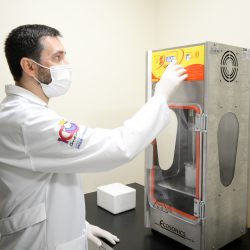
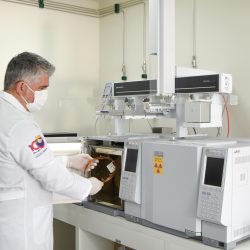
Partnerships in Brazil and worldwide
Science is a collective activity, which relies heavily on collaboration among scientists. The Pelé Pequeno Príncipe Research Institute has maintained several partnerships with national and international institutions for years, that have already yielded much fruit.
In 2021, an agreement was signed with Thales, a French technology company, for the creation of algorithms capable of indicating cancer prognoses through artificial intelligence. The Institute also expanded its partnership with the University of Kharkiv (Ukraine) on a project to measure radiation doses in children undergoing X-rays.
National partners
- A.C.Camargo Cancer Center
- Centro de Inovação e Ensaios Pré-Clínicos (CIEnP)
- Centro de Produção e Pesquisa de Imunobiológicos (CPPI)
- Faculdades Pequeno Príncipe
- Fundação Oswaldo Cruz (Fiocruz) – Instituto Carlos Chagas (ICC/Fiocruz Paraná, in Curitiba)
- Instituto de Tratamento do Câncer Infantil (Itaci, in São Paulo)
- Instituto Nacional de Câncer (Inca)
- Hospital de Amor (Barretos)
- Hospital de Clínicas da UFPR
- Hospital de Clínicas de Porto Alegre
- Hospital do Câncer de Cascavel (Uopeccan)
- Hospital Erasto Gaertner
- Hospital Israelita Albert Einstein (São Paulo)
- Hospital Nossa Senhora das Graças
- Hospital Universitário Evangélico Mackenzie
- Novos Arranjos de Pesquisa e Inovação (NAPI-Genômica, in Guarapuava, state of Paraná)
- Pontifícia Universidade Católica do Paraná (PUCPR)
- Rede Genômica Nacional
- Universidade Católica de Pelotas (UCPel)
- Universidade Ceuma
- Universidade de São Paulo (USP)
- Universidade do Estado de Santa Catarina (Udesc)
- Universidade Estadual de Londrina (UEL)
- Universidade Estadual do Norte Fluminense Darcy Ribeiro (UENF)
- Universidade Estadual do Paraná (Unespar)
- Universidade Federal da Grande Dourados (UFGD)
- Universidade Federal de Pernambuco (UFPE)
- Universidade Federal de Santa Catarina (UFSC)
- Universidade Federal de Santa Maria (UFSM)
- Universidade Federal do Delta do Parnaíba (UFDPar)
- Universidade Federal do Maranhão (UFMA)
- Universidade Federal do Paraná (UFPR)
- Universidade Federal do Recôncavo da Bahia (UFRB)
- Universidade Federal do Rio de Janeiro (UFRJ)
- Universidade Paranaense (Unipar)
- Universidade Tecnológica Federal do Paraná (UTFPR)
International partners
- Emory University (USA)
- Georgetown University (USA)
- Georgia State University (USA)
- Howard University (USA)
- Icahn Mount Sinai School of Medicine (USA)
- Imagine Institute (France)
- INSERM U1163, Paris 5 (France)
- Institute of Molecular and Cellular Pharmacology of Valbonne (France)
- King’s College (England)
- Loma Linda University Medical Center (USA)
- National Cancer Institute (USA)
- National Institute of Pediatrics (Mexico)
- Rockefeller University (USA)
- St. Jude Children’s Research Hospital (USA)
- Thales Group (France)
- University of Antioquia (Colombia)
- University of Applied Sciences (Germany)
- University of Cagliari (Italy)
- University of California (USA)
- University of Kharkiv (Ukraine)
- University of the Western Cape (South Africa)
Impact articles
See the articles by researchers from the Pelé Pequeno Príncipe Research Institute published in 2021.
Adrenocortical Carcinoma Steroid Profiles: In Silico Pan-Cancer Analysis of TCGA Data Uncovers Immunotherapy Targets for Improved Outcomes. Frontiers in Endocrinology.
https://doi.org/10.3389/fendo.2021.672319
The Common Germline TP53-R337H Mutation Is Hypomorphic and Confers Incomplete Penetrance and Late Tumor Onset in a Mouse Model. Cancer Research.
https://doi.org/10.1158/0008-5472.CAN-20-1750
Pharmacological profile and effects of mitotane in adrenocortical carcinoma. British Journal of Clinical Pharmacology.
https://doi.org/10.1111/bcp.14721
Newborn Screening for the Detection of the TP53 R337H Variant and Surveillance for Early Diagnosis of Pediatric Adrenocortical Tumors: Lessons Learned and Way Forward. Cancers.
https://doi.org/10.3390/cancers13236111
Curative therapy for hemoglobinopathies: an International Society for Cell & Gene Therapy Stem Cell Engineering Committee review comparing outcomes, accessibility and cost of ex vivo stem cell gene therapy versus allogeneic hematopoietic stem cell transplantation. Cytotherapy.
https://doi.org/10.1016/j.jcyt.2021.09.003
Nursing diagnosis after hematopoietic stem cell transplant due to Fanconi anemia. Revista Brasileira de Enfermagem.
https://doi.org/10.1590/0034-7167-2019-0864
Associação Brasileira de Hematologia, Hemoterapia e Terapia Celular Consensus on genetically modified cells. II: CAR-T cell therapy for patients with CD19+ acute lymphoblastic leukemia. Hematology, Transfusion and Cell Therapy.
https://doi.org/10.1016/j.htct.2021.09.002
Ocular Manifestations in Patients with Fanconi Anemia: A Single Center Experience Including 106 Patients. The Journal of Pediatrics.
https://doi.org/10.1016/j.jpeds.2021.11.013
Kidney complications in 107 Fanconi anemia patients submitted to hematopoietic cell transplantation. European Journal of Pediatrics.
https://doi.org/10.1007/s00431-021-04263-0
Impact of mother donor, peripheral blood stem cells and measurable residual disease on outcomes after haploidentical hematopoietic cell transplantation with post-transplant cyclophosphamide in children with acute leukaemia. Bone Marrow Transplantation.
https://doi.org/10.1038/s41409-021-01453-0
Analysis of baseline characteristics, disease burden and long-term follow-up of 167 patients with Paroxysmal Nocturnal Hemoglobinuria at a single center in Brazil. Blood Cells, Molecules, and Diseases.
https://doi.org/10.1016/j.bcmd.2021.102605
Therapy-related acute myeloid leukemia with KMT2A-SNX9 gene fusion associated with a hyperdiploid karyotype after hemophagocytic lymphohistiocytosis. Cancer Genetics.
https://doi.org/10.1016/j.cancergen.2021.05.001
Outcomes After Haploidentical Hematopoietic Cell Transplantation with Post-Transplantation Cyclophosphamide: A Systematic Review and Meta-Analysis Comparing Myeloablative with Reduced-Intensity Conditioning Regimens and Bone Marrow with Peripheral Blood Stem Cell Grafts. Transplantation and Cellular Therapy.
https://doi.org/10.1016/j.jtct.2021.06.011
International retrospective study of allogeneic hematopoietic cell transplantation for activated PI3K-delta syndrome. Journal of Allergy and Clinical Immunology.
https://doi.org/10.1016/j.jaci.2021.04.036
The impact of donor-specific anti-human leukocyte antigen antibodies in salvage haploidentical hematopoietic cell transplantation with posttransplant cyclophosphamide in patients with nonmalignant disorders. HLA.
https://doi.org/10.1111/tan.14277
Mortality among pediatric hematopoietic stem cell transplantation patients: Report from a single center in southern Brazil. Pediatric Transplantation.
https://doi.org/10.1111/petr.13944
A case series of medication-related fibrovascular hyperplasia following hematopoietic stem cell transplantation for Fanconi anemia. Pediatric Transplantation.
https://doi.org/10.1111/petr.13947
Self-perception of periodontal health status among individuals with Fanconi anemia. Hematology, Transfusion and Cell Therapy.
https://doi.org/10.1016/j.htct.2020.07.009
FLAG-sequential regimen followed by bone marrow transplantation for myelodysplastic syndrome or acute leukemia in patients with Fanconi anemia: a Franco-Brazilian study. Bone Marrow Transplantation.
https://doi.org/10.1038/s41409-020-0994-2
Outcome of SARS-CoV-2 Infection in 121 Patients with Inborn Errors of Immunity: A Cross-Sectional Study. Journal of Clinical Immunology.
https://doi.org/10.1007/s10875-021-01066-8
CD40L modulates transcriptional signatures of neutrophils in the bone marrow associated with development and trafficking. JCI Insight.
https://doi.org/10.1172/jci.insight.148652
Immunity and inflammatory biomarkers in COVID-19: A Systematic Review. Reviews in Medical Virology.
https://doi.org/10.1002/rmv.2199
Autoantibodies neutralizing type I IFNs are present in ~4% of uninfected individuals over 70 years old and account for ~20% of COVID-19 deaths. Science Immunology.
https://doi.org/10.1126/sciimmunol.abl4340
A global effort to dissect the human genetic basis of resistance to SARS-CoV-2 infection. Nature Immunology.
https://doi.org/10.1038/s41590-021-01030-z
SARS-CoV-2 related MIS-C: A key to the viral and genetic causes of Kawasaki disease? The Journal of Experimental Medicine.
https://doi.org/10.1084/jem.20210446
From your nose to your toes: a review of severe acute respiratory syndrome coronavirus 2 pandemic-associated pernio. Journal of Investigative Dermatology.
https://doi.org/10.1016/j.jid.2021.05.024
Brazilian high school students conceptions about alcoholic beverages. Cadernos de Educação, Tecnologia e Sociedade.
http://dx.doi.org/10.14571/brajets.v14.n1
Systematic review and single-centre toxicology study identified analgesics and benzodiazepines as the main causes of paediatric medication poisoning. Acta Paediatrica.
https://doi.org/10.1111/apa.15531
IQ alteration induced by lead in developed and underdeveloped/developing countries: A systematic review and a meta-analysis. Environmental Pollution.
https://doi.org/10.1016/j.envpol.2021.118316
A gestão de caso e a avaliação da vulnerabilidade materna como estratégia de enfrentamento ao óbito infantil no Brasil: o caso do Paraná. Anais do Instituto de Higiene e Medicina Tropical.
https://doi.org/10.25761/anaisihmt.374
Is there an association of genetic polymorphisms of the catechol-O-methyltransferase gene (rs165656 and rs174675) and the 5-hydroxytryptamine receptor 2 A gene (rs4941573 and rs6313) with sleep bruxism in individuals with obstructive sleep apnea? Archives of Oral Biology.
https://doi.org/10.1016/j.archoralbio.2021.105315
The Impact of Parkin as a Possible Future Biomarker in Five Solid Pediatric Tumors. Journal of Molecular and Genetic Medicine.
https://www.hilarispublisher.com/open-access/the-impact-of-parkin-as-a-possible-future-biomarker-in-five-solid-pediatric-tumors.pdf
Association between COVID-19 pregnant women symptoms severity and placental morphologic features. Frontiers in Immunology.
https://doi.org/10.3389/fimmu.2021.685919
Parkin and its Molecular Associations in Gliomas – A Systematic Review. Surgical and Experimental Pathology.
https://doi.org/10.1186/s42047-021-00093-4
Lung Neutrophilic Recruitment and IL-8/IL-17A Tissue Expression in COVID-19. Frontiers in Immunology.
https://doi.org/10.3389/fimmu.2021.656350
Susceptibility to SARS-CoV-2 infection in patients undergoing chemotherapy and radiation therapy. Journal of Infection and Public Health.
https://doi.org/10.1016/j.jiph.2021.03.008
Rhamnogalacturonan polysaccharide inhibits inflammation and oxidative stress and alleviates visceral pain. Journal of Functional Foods.
https://doi.org/10.1016/j.jff.2021.104483
Beneficial effects of polysaccharides on the epithelial barrier function in intestinal mucositis. Frontiers in Physiology.
https://doi.org/10.3389/fphys.2021.714846
Effectiveness of the polyphenols-rich Sedum dendroideum infusion on gastric ulcer healing in rats: roles of protective endogenous factors and antioxidant and anti-inflammatory mechanisms. Journal of Ethnopharmacology.
https://doi.org/10.1016/j.jep.2021.114260
Editorial: Nutrition and Regulation of Gastrointestinal Homeostasis, Injuries and Disturbances. Frontiers in Physiology.
https://doi.org/10.3389/fphys.2021.803200
The potential anti-inflammatory and anti-nociceptive effects of rat hemopressin (PVNFKFLSH) in experimental arthritis. European Journal of Pharmacology.
https://doi.org/10.1016/j.ejphar.2020.173636
Clinical effects of red wine on the effectiveness, sensitivity and periodontal inflammation induced by at-home bleaching. Quintessence International.
https://doi.org/10.3290/j.qi.b1864313
Monitoring of Peripheral Blood Leukocytes and Plasma Samples: A Pilot Study to Examine Treatment Response to Leflunomide in Rheumatoid Arthritis. Pharmaceuticals.
https://doi.org/10.3390/ph14020106
Anti-Inflammatory and Healing Activity of the Hydroalcoholic Fruit Extract of Solanum diploconos (Mart.) Bohs. Journal of Immunology Research.
https://doi.org/10.1155/2021/9957451
Genomic analysis of Limosilactobacillus fermentum ATCC 23271, a potential probiotic strain with anti-Candida activity. Journal of Fungi.
https://doi.org/10.3390/jof7100794
Polysaccharides with Antitumor Effect in Breast Cancer: A Systematic Review of Non-Clinical Studies. Nutrients.
https://doi.org/10.3390/nu13062008
Polysaccharides from Pleurotus eryngii: Selective extraction methodologies and their modulatory effects on THP-1 macrophages. Carbohydrate Polymers.
https://doi.org/10.1016/j.carbpol.2020.117177
Fungal beta-glucans as adjuvants for treating cancer patients – A systematic review of clinical trials. Clinical Nutrition.
https://doi.org/10.1016/j.clnu.2020.11.029
Evaluation of the Radiation Exposure in Sequential Head Tomographic Exams of Patients with Traumatic Brain Injury and Decompressive Craniectomy. Radiation Protection Dosimetry.
https://doi.org/10.1093/rpd/ncaa220
Entrance Skin Dose Evaluation in Pediatric Patients Undergoing Skull, Pelvis and Abdomen Radiographs. Journal of Physics: Conference Series.
https://doi.org/10.1088/1742-6596/1826/1/012044
Optimización de la protección en radiologia y cardiologia intervencionista pediatrica em América Latina y el Caribe (OPRIPALC). Journal of Physics: Conference Series.
https://johamsc.com/wp-content/uploads/2022/01/P215-221-4.01JOHAMSC-UBEDA-044-21.pdf
Bixin attenuates mechanical allodynia, anxious and depressive-like behaviors associated with experimental diabetes counteracting oxidative stress and glycated hemoglobin. Brain Research.
https://doi.org/10.1016/j.brainres.2021.147557
Nutrigenomics in Regulating the Expression of Genes Related to Type 2 Diabetes Mellitus. Frontiers in Physiology.
https://doi.org/10.3389/fphys.2021.699220
Ecotoxicity of losartan potassium in aquatic organisms of different trophic levels. Environmental Toxicology and Pharmacology.
https://doi.org/10.1016/j.etap.2021.103727
Combined Biomaterials: Amniotic Membrane and Adipose Tissue to Restore Injured Bone as Promoter of Calcification in Bone Regeneration: Preclinical Model. Calcified Tissue International.
https://doi.org/10.1007/s00223-020-00793-1
Nanostructured Cellulose-Gellan-Xyloglucan-Lysozyme Dressing Seeded with Mesenchymal Stem Cells for Deep Second-Degree Burn Treatment. International Journal of Nanomedicine.
https://doi.org/10.2147/IJN.S289868
Role of mononuclear stem cells and decellularized amniotic membrane in the treatment of skin wounds in rats. Tissue Barriers.
https://doi.org/10.1080/21688370.2021.1982364
Beneficial Roles of Cellulose Patch-Mediated Cell Therapy in Myocardial Infarction: A Preclinical Study. Cells.
https://doi.org/10.3390/cells10020424
Adipose-Derived Stromal Cells and Mineralized Extracellular Matrix Delivery by a Human Decellularized Amniotic Membrane in Periodontal Tissue Engineering. Membranes.
https://doi.org/10.3390/membranes11080606
Natural Membrane Differentiates Human Adipose-Derived Mesenchymal Stem Cells to Neurospheres by Mechanotransduction Related to YAP and AMOT Proteins. Membranes.
https://doi.org/10.3390/membranes11090687
Environmental Detection of SARS-CoV-2 Virus RNA in Health Facilities in Brazil and a Systematic Review on Contamination Sources. International Journal of Environmental Research and Public Health.
https://doi.org/10.3390/ijerph18073824
Bone-Marrow Stem Cells and Acellular Human Amniotic Membrane in a Rat Model of Heart Failure. Life.
https://doi.org/10.3390/life11090958
Human Mesenchymal Stem Cells Seeded on the Natural Membrane to Neurospheres for Cholinergic-like Neurons. Membranes.
https://doi.org/10.3390/membranes11080598
Tracheal Repair with Human Umbilical Cord Mesenchymal Stem Cells Differentiated in Chondrocytes Grown on an Acellular Amniotic Membrane: A Pre-Clinical Approach. Life.
https://doi.org/10.3390/life11090879
Potential of Human Neural Precursor Cells in Diabetic Retinopathy Therapeutics – Preclinical Model. Current Eye Research.
https://doi.org/10.1080/02713683.2021.2002909
Biodegradable nanoparticles loaded with levodopa and/or curcumin for treatment of Parkinson’s disease. European Journal of Public Health.
https://academic.oup.com/eurpub/article/31/
Supplement_2/ckab120.070/6336146
Mesenchymal stem cells immortalization’s and state-of-art: a systematic review and meta-analysis. European Journal of Public Health.
https://academic.oup.com/eurpub/article/31/
Supplement_2/ckab120.058/6336097
The natural functional biopolymer matrix demonstrates to be a promise for safe cell therapy in Parkinson’s disease. European Journal of Public Health.
https://doi.org/10.1093/eurpub/ckab120.104
Human Mesenchymal Stem Cells Seeded on the Natural Membrane to Neurospheres for Cholinergic-like Neurons. Membranes.
https://doi.org/10.3390/membranes11080598
The induced dose of experimental autoimmune encephalomyelitis was not determinant and proportional to histopathological findings. European Journal of Public Health.
https://academic.oup.com/eurpub/article/31/
Supplement_2/ckab120.080/6336201
Ilex paraguariensis extract as an alternative to pain medications. Acta Pharmaceutica.
https://doi.org/10.2478/acph-2021-0029
Phytochemical characterization and antimicrobial activity of Terminalia catappa and its inclusion in the preparation of PVA electrospun film with potential healing effect. World Journal of Pharmacy and Pharmaceutical Sciences.
http://dx.doi.org/10.20959/wjpps20214-18739
Multiple Risk Factors for Heart Disease: A Challenge to the Ethnopharmacological Use of Croton urucurana Baill. Evidence-Based Complementary and Alternative Medicine.
https://doi.org/10.1155/2021/6580458
The Xpert® MTB/RIF diagnostic test for pulmonary and extrapulmonary tuberculosis in immunocompetent and immunocompromised patients: Benefits and experiences over 2 years in different clinical contexts. PLOS ONE.
https://doi.org/10.1371/journal.pone.0247185
Emergence of Thymidine-Dependent Staphylococcus aureus Small-Colony Variants in Cystic Fibrosis Patients in Southern Brazil. Microbiology Spectrum.
https://doi.org/10.1128/Spectrum.00614-21
Antimicrobial resistance in Aeromonas species isolated from aquatic environments in Brazil. Journal of Applied Microbiology.
https://sfamjournals.onlinelibrary.wiley.com/doi/abs/10.1111/jam.14965
QNBC Is Associated with High Genomic Instability Characterized by Copy Number Alterations and miRNA Deregulation. International Journal of Molecular Sciences.
https://doi.org/10.3390/ijms222111548
Genome interaction of the virus and the host genes and non-coding RNAs in SARS-CoV-2 infection. Immunobiology.
https://doi.org/10.1016/j.imbio.2021.152130
A panel of miRNAs as prognostic markers for African-American patients with triple negative breast cancer. BMC Cancer.
https://doi.org/10.1186/s12885-021-08573-2
The role of microRNAs in modulating SARS-CoV-2 infection in human cells: a systematic review. Infection, Genetics and Evolution.
https://doi.org/10.1016/j.meegid.2021.104832
Integrated analysis of label-free quantitative proteomics and bioinformatics reveal insights into signaling pathways in male breast cancer. Genetics and Molecular Biology.
https://doi.org/10.1590/1678-4685-GMB-2019-0410
HPV-associated penile cancer: Impact of copy number alterations in miRNA/mRNA interactions and potential druggable targets. Cancer Biomarkers.
https://doi.org/10.3233/CBM-210035
Neurological Characteristics of Pediatric Glycogen Storage Disease. Frontiers in Endocrinology.
https://doi.org/10.3389/fendo.2021.685272
Potential Risk Factors for Autism in Children Requiring Neonatal Intensive Care Unit. Neuropediatrics.
https://doi.org/10.1055/s-0041-1726401
Neuropsychological and behavioural profiles of students with intellectual development disorder on parents and teachers’ perceptions. Journal of Intellectual Disability Research.
https://doi.org/10.1111/jir.12837
Clinical and Neurological Course of Tuberous Sclerosis Complex in Children and Adolescents. Annals of Pediatrics & Child Health.
https://www.jscimedcentral.com/Pediatrics/
pediatrics-9-1225.pdf
GABAA receptor encephalitis associated with human parvovirus B19 virus infection: Case report. Medicine.
http://dx.doi.org/10.1097/MD.0000000000026324
